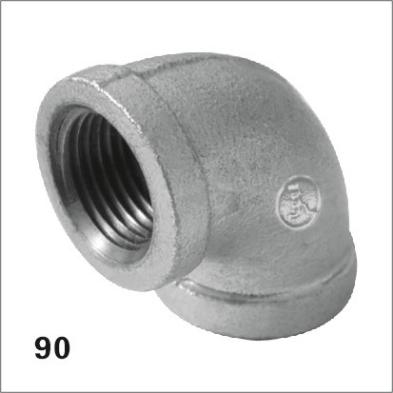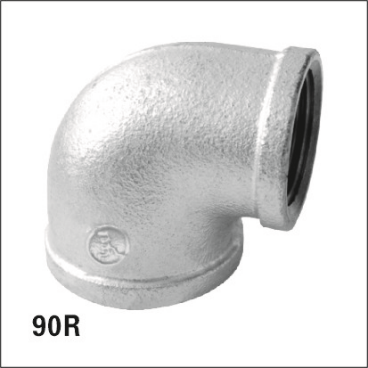Sep. 25, 2024
In the realm of construction and infrastructure, safety is a paramount concern. Among the numerous safety measures taken in both residential and commercial buildings, fire protection systems are critical for preserving lives and property. The key component of these systems is the use of specialized fire-resistant pipe fittings.
Understanding the importance of using the correct pipe fittings for fire protection projects can be the difference between a contained incident and a catastrophic failure. This article will explore various types of pipe fittings suitable for fire protection systems, highlight their importance in ensuring compliance with safety standards, and discuss the role of fireproof pipe fittings in safeguarding a structure.

Before delving into specific types of fittings, it’s crucial to understand the fundamental role that pipe fittings play in fire protection systems. Fire protection systems rely on an intricate network of pipes to distribute water, foam, or other fire-suppressing agents throughout a building. These pipelines must maintain their functionality under extreme conditions, such as high temperatures or physical stresses.
Galvanized steel is one of the most commonly used materials in fire protection piping systems. These fittings are coated with a layer of zinc, which helps prevent rust and corrosion, ensuring the pipes and fittings maintain their structural integrity over time. Advantages of using galvanized steel fittings.
Key advantages:
· Long-lasting durability
· Corrosion
· High temperature tolerance, making them ideal
· Easy availability and cost
Key advantages:
· High tensile strength
· Resistance to Flex
· Long lifespan
Ductile iron is frequently used in underground fire protection piping systems, such as those found in municipal fire mains and industrial complexes.
CPVC fittings are increasingly becoming popular in fire protection systems, particularly for residential and light commercial buildings. CPVC is known for its fire resistance, corrosion resistance, and ease of installation. Because CPVC does not corrode or scale like metal pipes, it is especially beneficial in environments where water quality might otherwise cause issues with metallic piping.
Key advantages:
· Lightweight and easy to install.
· Resistant to corrosion and scaling.
· Good heat resistance, withstanding temperatures up to 200°F (93°C).
· Cost-effective, especially for small to medium-sized projects.
Despite their many benefits, CPVC fittings do have some limitations, including a lower pressure tolerance compared to metal fittings and susceptibility to damage from external impacts. However, for certain fire protection applications, particularly sprinkler systems, they provide an efficient and affordable solution.
Brass and bronze pipe fittings are also commonly used in fire protection systems, especially in applications that require extreme durability and resistance to corrosion. These metals are inherently resistant to rust, which makes them ideal for environments where moisture is a concern. Additionally, both brass and bronze have a high melting point, contributing to their effectiveness in fire protection scenarios.
Key advantages:
· Excellent corrosion resistance.
· High melting point, making them suitable for high-temperature applications.
· Long lifespan with minimal maintenance required.
· Commonly used in specialized fire protection applications, such as fire hose valves and fire department connections.
However, brass and bronze fittings can be more expensive than other materials, so they are often used strategically in specific areas of a fire protection system rather than throughout the entire network.
Stainless steel fittings are known for their excellent resistance to corrosion and ability to withstand extreme temperatures. In fire protection systems, stainless steel fittings are often used in areas where both fire resistance and corrosion resistance are paramount. For instance, they are ideal in chemical plants or offshore platforms where both fire hazards and corrosive environments are present.

Key advantages:
· Excellent corrosion resistance in harsh environments.
· High heat tolerance, suitable for extreme fire conditions.
· Aesthetic appeal in visible installations (e.g., exposed piping in industrial settings).
While stainless steel offers many advantages, its cost is significantly higher than that of materials like galvanized steel or CPVC, limiting its use to high-risk or high-value applications.
In a fire protection system, pipe fittings are the weak points where leaks or failures are most likely to occur if the materials used are not fireproof. Regular fittings may melt, warp, or crack under the intense heat of a fire, rendering the entire system useless. By using fireproof fittings, building owners and engineers can ensure that the system will continue functioning even under extreme conditions.
The materials typically used for fireproof pipe fittings include metals with high heat tolerance, such as:
· Cast iron and ductile iron, which maintain their strength even at high temperatures.
· Stainless steel, known for its heat resistance and ability to remain structurally sound during a fire.
· Brass and bronze, which have a high melting point and are used in specialized fire suppression applications.
In addition to the material, fireproof fittings are often treated or coated with additional layers of protection to improve their resistance to heat and prevent any degradation of the system during a fire.
Fire protection systems must meet stringent safety codes and standards, such as those set by the National Fire Protection Association (NFPA) or local fire
To ensure compliance, engineers and building managers should carefully select fittings that meet the relevant fire safety codes. For example, CPVC fittings may be used alongside galvanized steel or ductile iron.
Many fire-resistant pipe fittings undergo a rigorous testing and certification process to ensure they meet fire safety standards. When selecting duct fittings for a fire protection project, it is important to verify that the fittings have been tested and certified by a recognized agency, such as Underwriters Laboratories (UL) or Factory Mutual Global.
In summary, choosing the right pipe fittings for fire protection projects is crucial for the overall success and safety of the system. Fireproof pipe fittings, in particular, are essential for ensuring that fire protection systems remain functional even under extreme heat and pressure. Whether using galvanized steel, CPVC, ductile iron, or stainless steel, selecting the appropriate material is vital.
By investing in the appropriate fireproof pipe fittings, engineers, architects, and building managers can ensure that fire protection systems are robust and reliable.
SAFER
PRODUCT INFO
ABOUT JIANZHI
TECH DATA
Contact Us
E-mail: sales1@jianzhi-fitting.com
Tel: +86 18698027872
Office In Tianjin:
Heping District, Tianjin, China.
Production Base 1:
Chifeng, Inner Mongolia, China.
Production Base 2:
Tangshan City, Hebei Province, China.
Production Base 3:
Schelei Street,Baicoi City,Prahova County,Romania
Service email: info.ro@jianzhi-fitting.com
Sales email: market.ro@jianzhi-fitting.com
Tel: +40(755)011 849
